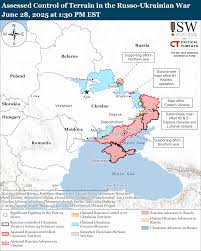Russia-Ukraine War Map 2025: Strategic Overview of Current Territorial Control and Recent Developments

Current Territorial Situation
Russia currently occupies approximately 19% of Ukraine’s territory, an area roughly equivalent to the size of the U.S. state of Ohio.
According to Ukraine’s DeepState OSINT group’s latest data, Russian forces control about 114,443 square kilometers of Ukrainian territory. In the past month, Russian forces have made territorial gains of approximately 550 square kilometers.
Recent Military Developments
Significant developments have occurred in the Dobropillya-Pokrovsk sectors of the Donetsk region, where Russian advances are threatening not only these cities but also the supply lines to the strategically important city of Kramatorsk.
Recent Russian strikes have targeted Kyiv, resulting in casualties and damage to diplomatic facilities. The attacks damaged buildings hosting the European Union Delegation to Ukraine and the British Council, prompting diplomatic protests from London and Brussels.
Infrastructure and Power Supply
Ukraine’s power infrastructure remains vulnerable to Russian aggression. The country has lost 80% of its thermal capacity due to Russian attacks, and currently relies on three functioning Soviet-era nuclear power plants for approximately two-thirds of its electricity generation.
Diplomatic Situation
Ukrainian President Zelenskyy has maintained his position against surrendering any Ukrainian territory to Russia, including the Donbas region, as part of any ceasefire deal. This stance is reinforced by Ukraine’s constitution, which specifically outlines the country’s territories and would make any territorial concessions illegal. This includes Crimea, which was annexed by Russia in 2014.
Humanitarian Impact
The ongoing conflict has resulted in hundreds of thousands of military casualties and numerous Ukrainian civilian casualties. The war has displaced approximately 8 million Ukrainians internally, while more than 8.2 million have fled the country, creating Europe’s largest refugee crisis since World War II.
International Support and Sanctions
Despite international sanctions, Russia continues to generate significant revenue from fossil fuel exports to the West. Notably, Ukraine’s Western allies have paid Russia more for its hydrocarbons than they have provided in aid to Ukraine. Some countries have established “laundromat refineries” in Turkey and India to process Russian crude oil and sell refined fuel to sanctioning countries.









